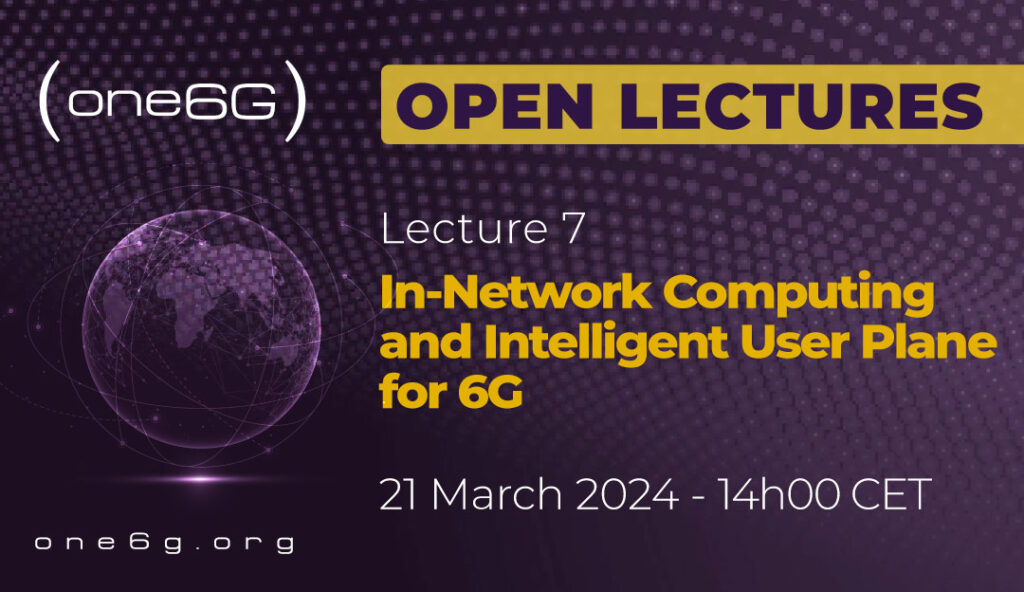Open Lecture 7 – In-Network Computing and Intelligent User Plane for 6G

Following the success of the previous lectures, the Association is happy to confirm that Open Lecture 7 will take place on March 21, 2024, at 14h00 CET, covering the subject of In-Network Computing and Intelligent User Plane for 6G.
After mobile edge computing, the next evolutionary step on the pathway to bring computation even closer to the user is to compute in the network. In-Network Computing (INC) is a promising enabler for 6G with high potential to support meeting the stringent delay requirements of 6G use-cases and applications, including robotics, VR gaming, or remote surgery. Besides latency reduction, the concept of INC has been proven beneficial for network traffic volume reduction and offloading compute tasks from mobile end-devices to the network. This allows to minimize the devices’ battery drainage and supports the design of more lightweight devices.
The one6G Open Lecture 7 will center around the topic of In-Network Computing and Intelligent User Plane for 6G. Four top experts in the field, representing both academia and industry, will discuss the state of the art of INC, including architecture concepts, current challenges, and recent advances when it comes to integrating native computing as a key feature into 6G networks.
Join us on March 21, 2024 at 2 p.m. CET to learn more!
AGENDA
14:00 Welcome & opening

Riccardo Guerzoni
Director of the Core Network Group, DOCOMO Euro-Labs, Munich
14:05 Native artificial intelligence and native computing as key features of 6G

Markus Mueck
Intel
14:25 Intelligent programmable data planes to optimize application delivery in 6G networks

Marie-Jose Montpetit
McGill University, Montreal, Canada
14:45 In-network service-aware computing with hardware acceleration in 6G networks

Hiroki Baba
Network Service System Laboratories, NTT
15:05 Intelligent user plane for the manufacturing sector

Franco Callegati
University of Bologna
15:25 Q&A session and closing remarks
